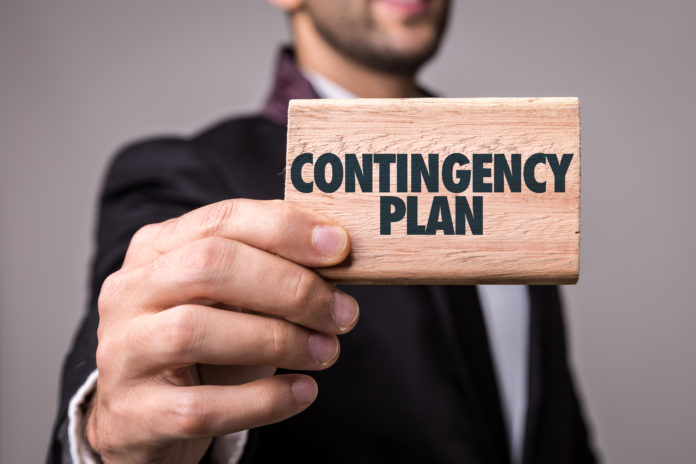
The building structures in modern megacities are no less than technological wonders. However, every now and then, we come across news about such modern structures catching fire or getting hit by natural disasters like earthquakes and typhoons. The structures with a contingency plan are able to make their inhabitants a safe exit but the absence of such a plan often results in calamities and the loss of life.
This is why it is important to have a contingency plan so that the operations do not come to a halt, and things keep going no matter what happens. It is referred to as a course of action that is designed to help organizations cope with unsolicited events. It is also devised to be used as an alternative plan for actions that fail to produce the desired results.
Speaking of this, fire, hurricanes, or floods are the type of events we relate contingency plans. However, it is not only limited to natural crises. Constructing a contingency plan for common problems such as loss of data, employee problems, or computer crashes is equally essential.
In the following blog post, we shall discuss how you can create a plan which is effective and robust enough to bring things back on track. Once you have it, you can cast the bucket of worries aside and fall on the back up as and when needed.
Let’s start talking now!
Assess the risk

According to onlinewilder.vcu.edu, having the right tools and knowledge to overcome and recover from a crisis is essential. In light of this, the first step to creating an effective contingency plan is to conduct a risk assessment and thoroughly study it. It is advised considering that each organization faces a unique set of challenges and risks. Therefore, not every threat or problem could be dealt with using the same approach.
For you to do so, you must identify your business’s critical operations, ignoring which could result in an untoward situation. To put things in perspective, this could be your internet connection or your supply chain. Whatever it is, once identified, you can then move ahead and get on to the identification of the threats.
Identify the threats
Well, it is time to list of potential factors that can harm each critical operation. When you sit to do this, there is a considerable chance that you will end up not just one but quite a long list of potential threats. Now, it is not only unrealistic but humanly impossible to formulate a contingency plan for each of them. Therefore, next, what we will advise you is to prioritize the most crucial ones.
To put a picture to these potential threats, it could be anything from a loss of a key staff member, an alteration in the government policy to a technical glitch, or outright failure.
How can you do this?

The smartest way to execute this is through Risk Impact/ Probability charts. Framing them in the form of a chart will help in critically analyzing the impact of each risk. In addition to this, you will be able to judge and observe how much a threat will likely occur.
Who to inform?
In times of crises, it can be really chaotic to make sense of what is going on, let alone to deduce who to reach out. Therefore, it is better to have a part in the contingency plan where it tells everything about communicating during a crisis. This part could include employees, customers, suppliers, or even the public where deemed appropriate.
Also, it is of paramount importance that the concerned people are educated about all the legal obligations and about relevant authorities that ought to be reported to when necessary.
Doing so will help in getting the problem under control faster. Otherwise, you can only expect the crisis to turn into a massive stampede.
Allot responsibilities

There are no short-cuts to devise a contingency plan. You need to take into consideration all the aspects of a disaster management strategy and identify the areas where you need to focus more. When you are making a contingency plan, be sure to have everyone on board and clearly define responsibilities to different resources within the organization. The resources should also be made aware of the person they report in an emergency situation.
Timeline
An effective contingency plan details all aspects of an instant action strategy. From the first hour to the first week and the first month after an untoward event, the plan should have phase-wise action details.
It could merely be about informing the employees right away or might need way more detailed timelines for grave situations such as privacy or data breaches, leakage of a hazardous substance, or a serious injury encountered in the workplace.
Furthermore, this part should also include the timeframe the business is expected to work as it should. Moreover, there should be mentioned somewhere in this part that what is it that will imply that the organization is all set to go and resume its operations.
Keep it simple

While you make one, be mindful of the fact that you are not running in a spelling bee competition but running an organization. Hence, be sure to use simple and plain language and avoid making it too jargony. This can be the biggest turn-off and might drive the attention away from the real purpose, which is to explain the plan to fight the crisis at hand.
Additionally, it is best to use job titles and roles rather than using names while defining the responsibilities given to everyone. It will keep the plan relevant regardless of who resigns and who joins the organization.
All in all, it is important for you to realize as an owner of the organization that your subordinates will be affected in a calamity as much as you are. It will be natural for them to stress out or perhaps, they will find it challenging to deal with. This is where you have to be patient and understanding!
















